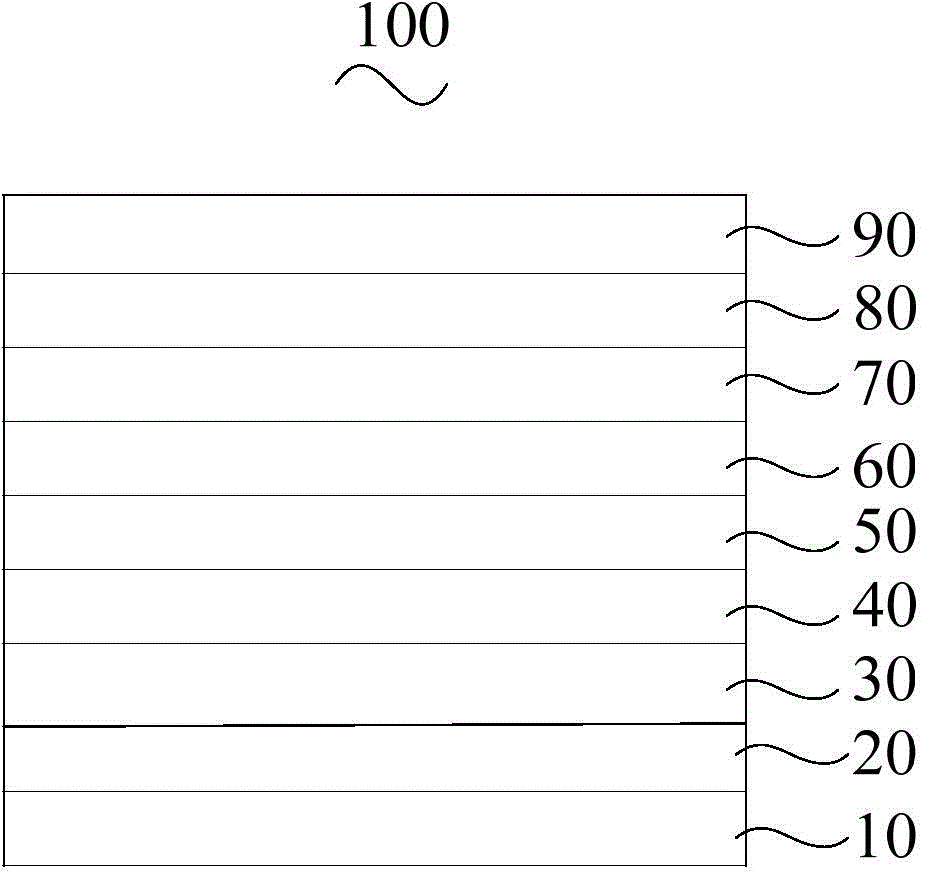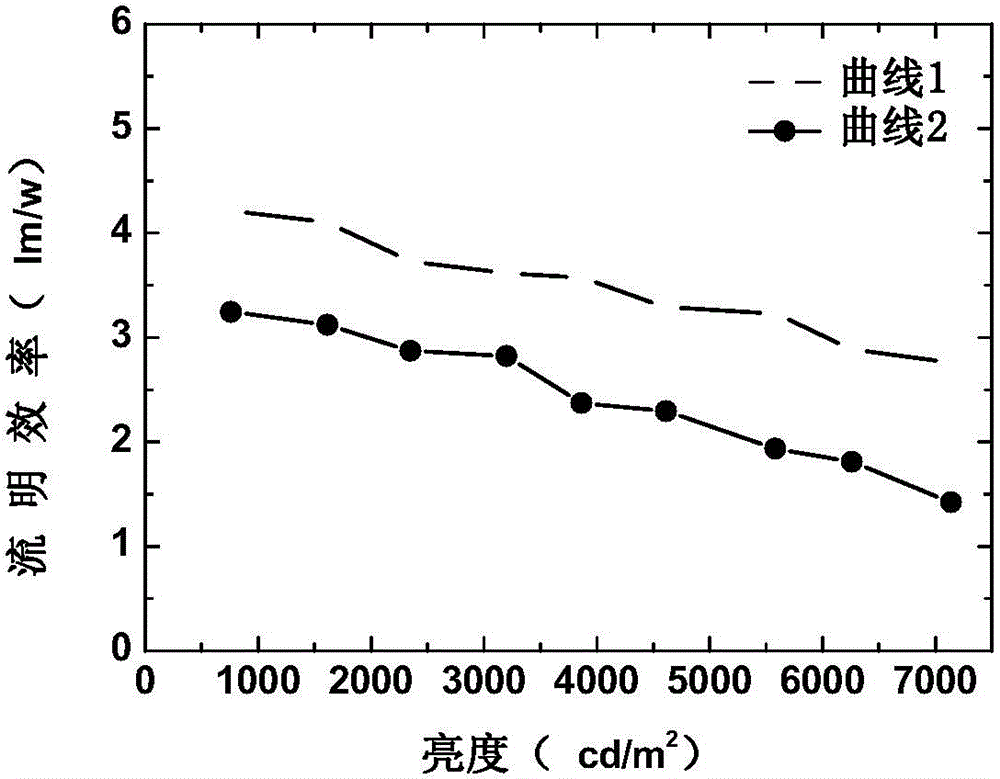Organic electroluminescent light emitting device and preparation method thereof
An electroluminescent device, organic technology, applied in the direction of electric solid device, semiconductor/solid state device manufacturing, electrical components, etc., can solve the problem of low luminous efficiency of light emitting device
- Summary
- Abstract
- Description
- Claims
- Application Information
AI Technical Summary
Problems solved by technology
Method used
Image
Examples
preparation example Construction
[0084] Such as figure 2 As shown, the method for preparing the above-mentioned organic electroluminescent device 100 according to an embodiment includes the following steps:
[0085] S110, providing a conductive anode substrate.
[0086] The conductive anode substrate 10 includes glass and a conductive anode film formed on one surface of the glass. The conductive anode film is indium tin oxide film (ITO), aluminum-doped zinc oxide film (AZO) or indium-doped zinc oxide film (IZO). The thickness of the conductive anode film is 50nm-300nm. Preferably, the conductive anode film is ITO with a thickness of 120nm.
[0087] The conductive anode film was prepared by magnetron sputtering. The acceleration voltage of magnetron sputtering is 300V-800V, the magnetic field is about 50G-200G, and the power density is 1W / cm 2 ~40W / cm 2 .
[0088] Before magnetron sputtering the conductive anode film, first rinse the glass with distilled water and ethanol, and soak it in isopropanol fo...
Embodiment 1
[0129] (1) After rinsing the glass with distilled water and ethanol, soak it in isopropanol overnight. A conductive anode film was prepared on one surface of the glass by magnetron sputtering. The acceleration voltage of magnetron sputtering is 700V, the magnetic field is 120G, and the power density is 25W / cm 2 . The material of the conductive anode film is ITO, and the thickness is 120nm.
[0130] (2) A hole injection layer is formed on the conductive anode substrate by vacuum evaporation method. The vacuum degree of vacuum evaporation is 8×10 -4 Pa, the evaporation rate is 0.2nm / s. The material of the hole injection layer is MoO 3 , with a thickness of 35nm.
[0131] (3) A hole transport layer is formed on the hole injection layer by a vacuum evaporation method. The vacuum degree of vacuum evaporation is 8×10 -4 Pa, the evaporation rate is 0.2nm / s. The material of the hole transport layer is NPB, and the thickness is 48nm.
[0132] (4) An electron blocking layer is...
Embodiment 2
[0141] (1) After rinsing the glass with distilled water and ethanol, soak it in isopropanol overnight. A conductive anode film was prepared on one surface of the glass by magnetron sputtering. The acceleration voltage of magnetron sputtering is 300V, the magnetic field is 50G, and the power density is 40W / cm 2 . The material of the conductive anode film is IZO with a thickness of 300nm.
[0142] (2) A hole injection layer is formed on the conductive anode substrate by vacuum evaporation method. The vacuum degree of vacuum evaporation is 2×10 -3 Pa, the evaporation rate is 1nm / s. The material of the hole injection layer is V 2 o 5 , with a thickness of 20nm.
[0143] (3) A hole transport layer is formed on the hole injection layer by a vacuum evaporation method. The vacuum degree of vacuum evaporation is 2×10 -3 Pa, the evaporation rate is 1nm / s. The material of the hole transport layer is TAPC, and the thickness is 50nm.
[0144] (4) An electron blocking layer is fo...
PUM
| Property | Measurement | Unit |
|---|---|---|
| Thickness | aaaaa | aaaaa |
| Thickness | aaaaa | aaaaa |
| Thickness | aaaaa | aaaaa |
Abstract
Description
Claims
Application Information
 Login to View More
Login to View More - R&D
- Intellectual Property
- Life Sciences
- Materials
- Tech Scout
- Unparalleled Data Quality
- Higher Quality Content
- 60% Fewer Hallucinations
Browse by: Latest US Patents, China's latest patents, Technical Efficacy Thesaurus, Application Domain, Technology Topic, Popular Technical Reports.
© 2025 PatSnap. All rights reserved.Legal|Privacy policy|Modern Slavery Act Transparency Statement|Sitemap|About US| Contact US: help@patsnap.com



